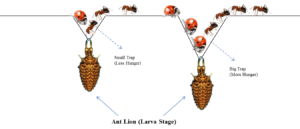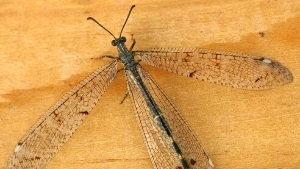Algorithm Development Ideas From Existing Recent Research Gaps In Computer Science Engineering Domain
In Brief
• You will find the best dissertation research areas / topics for future researchers enrolled in Engineering .
• In order to identify the future research topics, we have reviewed the Engineering literature (recent peer-reviewed studies) on the AI in optimization problems
• Nature-Inspired Optimization Algorithm is the recent trend in Artificial Intelligence.
• Ant-Lion Optimizer Algorithm (ALO) is one of Nature-Inspired Optimization Algorithm.
• Ant-Lion Optimizer Algorithm (ALO) is used to solve complicated optimisation problems in engineering design particularly in electrical engineering
This blog presents a nature-inspired algorithm called Ant Lion Optimizer (ALO). The ALO algorithm imitates nature’s ant lion hunting method. The ant lion has five key hunting phases, such as a random walk of ants, constructing traps, trapping ants in traps, capturing preys and rebuilding traps. Based on these ant lion nature behaviour, the Ant lion optimizer algorithm is designed. The ALO algorithm is employed to solve classical engineering challenges. This ALO identifies superior optimal designs, can also solve restricted problems with different search spaces.
Ant Lion Behaviour (Doodlebugs)
Antlions (doodlebugs) pertain to the family of Myrmeleontidae and Net-winged insects (Wang, Ye, & Yang, 2019). The antlion lifecycle consists of two major phases: the First stage is larvae and second stage is adult. The lifespan of the antlion is about 3 years; it lives most often in the larvae stage and only lasts 3–5 weeks in adulthood. Antlions undergo metamorphosis for adulthood in a cocoon. Most of the antlion hunts in the larvae stage and the period of adulthood is for reproduction (Chen, Chang, Hu, Fu, & Yan, 2019). Ant Lion names derive from the distinctive behaviour of hunting. An antlion dig a cone-shaped pit into the sand by shifting across a circular path with its massive jaw (Yadong, Quan, Weixing, & Qiang, 2019) After digging the trap, the larvae hide below the lower part of the cone and wait for insects (ant) to be trapped in the pit (Zheng, Wang, Zhao, Wang, & Du, 2019). The cone’s edge is sharp enough, and it makes insects to easily fall to the trap’s bottom.
When the antlion sees a target in the pit, they try to grab it ( Vikhe & Kalage, 2019). Generally, insects are not immediately caught and the insects attempt to evade the trap. In this situation, to slip the prey into the bottom of the pit, antlions smartly throw sands to the bottom of the hole. If the prey is spotted in the jaw, it drags the insects to the ground and eats it. Antlions throw the remaining outside the pit after eating the prey and alter the pit for another hunt. Some other intriguing behaviour noted in antlion lifestyle is the trap size. The trap size differs depending on the hunger level of ant lion or moon shape. Antlions strive to dig bigger traps if they are in more hungry or during full moon (Wang, Ye, & Yang, 2019). In this way they are designed and modified to boost their survival chances. It was also found that an antlion may not logically deduce the moon’s shape to determine the trap’s size, but it has an inner lunar clock to make these decisions (Goodenough, McGuire, & Jakob, 2009). Fig. 1 shows different sizes of cone-shaped pits for preying.

Source Adopted From Mirjalili,(2015)
Ant-Lion Optimizer Algorithm (ALO)
1. The random selection of antlions utilises a roulette wheel to discover the search space.
2. Random walks of ants across the antlions also underscore the discovery of the search space.
3. Using a random walk and roulette wheel, the ALO algorithm help to fix local deflation optima.
4. The ALO algorithm uses a search agent population to estimate the maximum global, so local optimum avoidance is extremely high.
5. Estimating random walks for each ant and dimension creates a variety of movement behaviours for ants within the trap of antlions and preserves the range of place examined around antlions.
6. Optimized shrinking method is used to establish random walk borders which facilitate manipulation as the response to increases Iteration.
7. During iterations, ants ‘ movement frequency is adjustably reduced, which ensures consistency of the ALO algorithm.
8. Successful search space regions are saved when antlions migrate throughout optimization to the location of the good ants.
9. In every iteration, the finest antlion is rescued and regarded the oligarchy, so that all ants also appear to the optimal solution.
10. The ALO algorithm has very few parameters to adjust, so it is a flexible algorithm to solve various problems.
11. The ALO algorithm is a gradient-free algorithm that treats issues as a black box, so it can easily be used to solve real problems.

Conclusion:
The Ant lion optimizer algorithm’s initial inspiration is the scavenging action of the larvae stage of the antlion. The algorithm is designed based on the antlion behaviour and preying nature. This ALO identifies superior optimal designs and can also solve limited search space problems. Therefore, the micro grid-connected system can be quickly integrated and more power can be distributed. The ALO can work in High levels of exploitation and convergence. The ALO algorithm solves classical engineering issues and real Computational Fluid Dynamics (CFD) issue.
Future scope
1. Can be used in Hyperspectral imaging (HSI) technique (Wang, Wu, Wang, Xiang, & Huang, 2019).
2. Can be used in agricultural credit classification (Chen et al., 2019).
3. Can be used in optimal fractional order design of a proportional–integral–derivative controller (Parashar, Swarnkar, Niazi, & Gupta, 2017).
References
- Chen, H., Chang, P., Hu, Z., Fu, H., & Yan, L. (2019). A Spark-based Ant Lion Algorithm for Parameters Optimization of Random Forest in Credit Classification. In 2019 IEEE 3rd Information Technology, Networking, Electronic and Automation Control Conference (ITNEC) (pp. 992–996).
- Goodenough, J., McGuire, B., & Jakob, E. (2009). Perspectives on Animal Behavior. Wiley.
- Griffiths, D. (1986). Pit Construction by Ant-Lion Larvae: A Cost-Benefit Analysis. The Journal of Animal Ecology, 55(1), 39
- Mirjalili, S. (2015). The Ant Lion Optimizer. Advances in Engineering Software, 83, 80–98.
- Parashar, S., Swarnkar, A., Niazi, K. R., & Gupta, N. (2017). Modified elephant herding optimisation for economic generation co-ordination of DERs and BESS in grid connected micro-grid. The Journal of Engineering, 2017(13), 1969–1973.
- Roy, K., Mandal, K. K., & Mandal, A. C. (2019). Ant-Lion Optimizer algorithm and recurrent neural network for energy management of micro grid connected system. Energy, 167, 402–416.
- Scharf, I., & Ovadia, O. (2006). Factors Influencing Site Abandonment and Site Selection in a Sit-and-Wait Predator: A Review of Pit-Building Antlion Larvae. Journal of Insect Behavior, 19(2), 197–218
- Scharf, I., Subach, A., & Ovadia, O. (2008). Foraging behaviour and habitat selection in pit-building antlion larvae in constant light or dark conditions. Animal Behaviour, 76(6), 2049–2057.
- Vikhe, A. S., & Kalage, A. A. (2019). Power System Optimisation using Ant Lion Optimisation Technique. In 2019 3rd International conference on Electronics, Communication and Aerospace Technology (ICECA) (pp. 355–361).
- Wang, M., Wang, L., Ye, Z., & Yang, J. (2019). Ant Lion Optimizer for Texture Classification: A Moving Convolutional Mask. IEEE Access, 7, 61697–61705.
- Wang, M., Wu, C., Wang, L., Xiang, D., & Huang, X. (2019). A feature selection approach for hyperspectral image based on modified ant lion optimizer. Knowledge-Based Systems, 168, 39–48.
- Yadong, W., Quan, S., Weixing, S., & Qiang, W. (2019). Improve Multi-objective Ant Lion Optimizer Based on Quasi-oppositional and Levy Fly. In 2019 Chinese Control And Decision Conference (CCDC) (pp. 12–17).
- Zheng, L., Wang, Z., Zhao, Z., Wang, J., & Du, W. (2019). Research of Bearing Fault Diagnosis Method Based on Multi-Layer Extreme Learning Machine Optimized by Novel Ant Lion Algorithm. IEEE Access, 7, 89845–89856.
- Guidelines to Write a Research Proposal for Neurology Research Scholars - March 19, 2021
- How to Choose a PhD Dissertation Topic For Economic Research? List out the Criteria for Topic Selection - March 11, 2021
- Beginners Guide to Write a Research Proposal for a PhD in Computer Science - February 19, 2021

